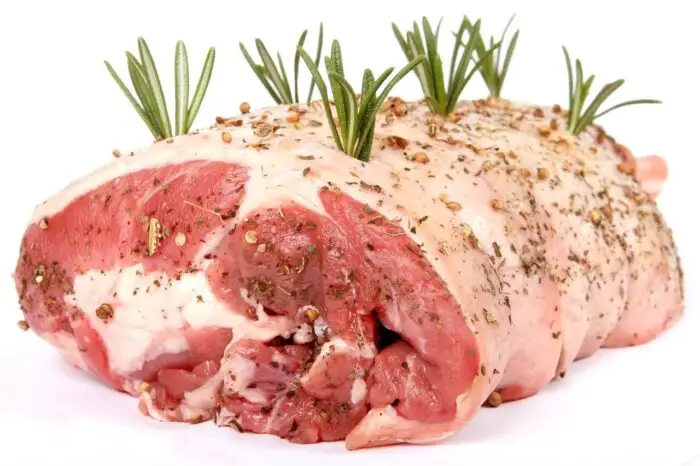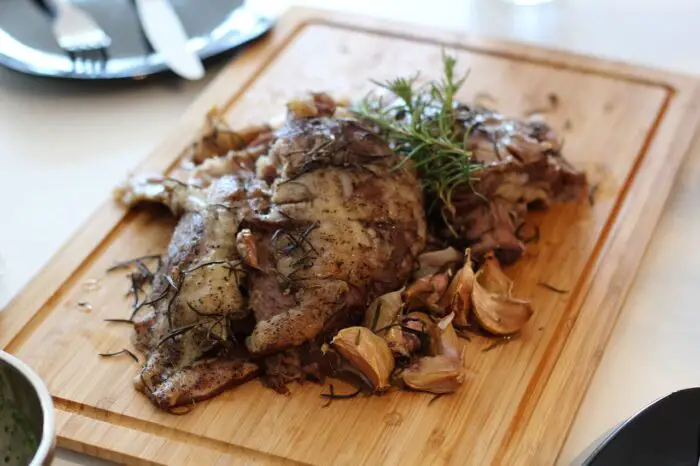AD | Sponsored Post
Roasting lamb is a culinary art that bridges cultures and generations. Whether for a festive gathering or a simple weekend meal, achieving that perfectly tender roast is a goal many aspire to. So, what is the secret behind the ultimate tenderness in a lamb roast? The answer primarily lies in the duration and method of roasting. The delicate balance of temperature, time, and technique holds the key to unlocking the lamb’s full potential, ensuring a sumptuous experience with every bite.
Understanding the Basics of Lamb Roasting
Before diving into the specifics, it’s beneficial to grasp the fundamental principles behind roasting lamb. The idea is to apply heat to break down the meat’s connective tissues, transforming them into luscious, melt-in-the-mouth textures. Lamb’s intrinsic characteristics, like its balanced fat-to-meat ratio, play a significant role in its end result after roasting. Grasping these principles can make the difference between a good roast and an exceptional one.
Factors Influencing Lamb Roasting Time
● Cut of the Lamb: Different cuts have unique textures and sizes. For instance, a leg of lamb is denser and might take longer than a rack of lamb. Knowing the specific cut helps in estimating the required roasting time. Familiarising oneself with these variations will ensure the desired outcome every time.
● Oven Temperature: A common misconception is that a higher temperature will speed up the cooking. While this might be true, it doesn’t guarantee tenderness. A moderate temperature ensures even cooking and prevents the outer layers from getting overcooked while the inside remains raw. Striking the right balance is key to preserving the lamb’s intrinsic flavours.
● Desired Doneness: Lamb can be enjoyed at various levels of doneness—rare, medium-rare, medium, and well-done. Each level impacts the cooking time.
Adjusting the roasting time according to personal preferences ensures the lamb is cooked just right, leading to a delightful dining experience.


Guidelines for Achieving Ultimate Tenderness
Lamb’s reputation for tenderness is well-known, but achieving that perfect texture requires certain insights. With these lamb cooking tips, the pathway to perfection becomes clearer.
● Pre-Roasting Preparations: Let the lamb sit at room temperature for about 30 minutes before roasting. This ensures even cooking. Preheat the oven to a moderate temperature, around 325°F (165°C). This small step, often overlooked, plays a pivotal role in achieving the ideal tenderness.
● Roasting Duration: As a general guideline for a leg of lamb:
● Rare: 15 minutes per pound
● Medium-rare: 20 minutes per pound
● Medium: 25 minutes per pound
● Well done: 30 minutes per pound
These are foundational times, but remember, ovens vary, and periodic checks can prevent over or undercooking.
● Resting Time: Once roasted, letting the lamb rest for about 15-20 minutes is crucial. This allows the juices to redistribute throughout the meat, ensuring each bite is moist and tender. It’s this patience during resting that elevates the dish from ordinary to extraordinary.
Monitoring for Perfection
Using a meat thermometer is an efficient way to determine the lamb’s internal temperature and gauge its level of doneness:
● Rare: 115-120°F (46-49°C)
● Medium-rare: 120-125°F (49-52°C)
● Medium: 130-135°F (54-57°C)
● Well-done: 145-150°F (63-66°C) This tool ensures perfect results and instils confidence in the cooking process, removing the guesswork from roasting.
Give It A Go
Achieving the perfect lamb roast isn’t about mastering a secret technique but understanding the basics and applying them consistently. By considering factors like the cut of the lamb, the desired doneness, and the importance of resting, even a novice can produce a tender and flavourful roast. Pair it with complementary sides, and a memorable meal awaits. The journey to ultimate tenderness combines knowledge, patience, and passion. So, when lamb graces the table next, these guidelines will ensure it’s a resounding success.

